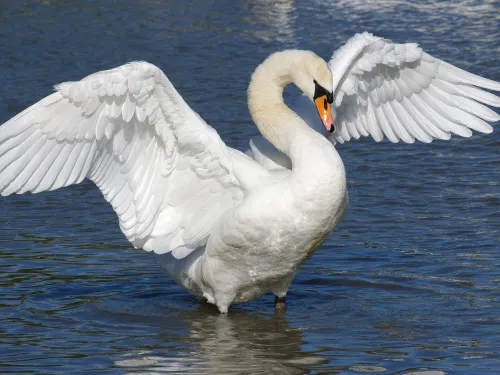
Mute swan
One of our most iconic waterbirds, the mute swan is famed for its grace and beauty. It is also considered to be a romantic of the bird world because partners form a perfect love heart with their necks.
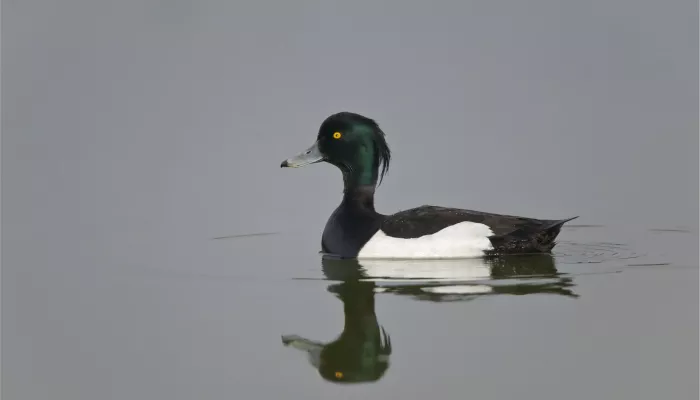
Kent is an internationally important coastline for breeding and visiting waterfowl birds. Learn more about these species and identify them using our guide.

One of our most iconic waterbirds, the mute swan is famed for its grace and beauty. It is also considered to be a romantic of the bird world because partners form a perfect love heart with their necks.
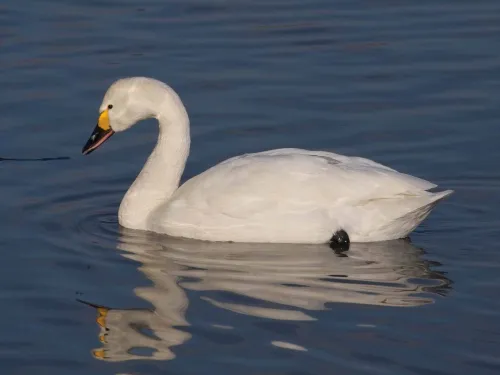
A winter visitor, the well-travelled Bewick's swan is the smallest of our swans. It has more black on its yellow-and-black bill than the whooper swan. Look out for it around Eastern England and the Severn Estuary.
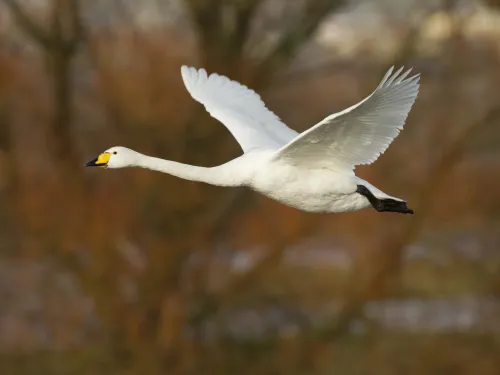
The whooper swan is a very rare breeding bird in the UK, but has much larger populations that spend winter here after a long journey from Iceland. It has more yellow on its yellow-and-black bill than the Bewick's Swan.
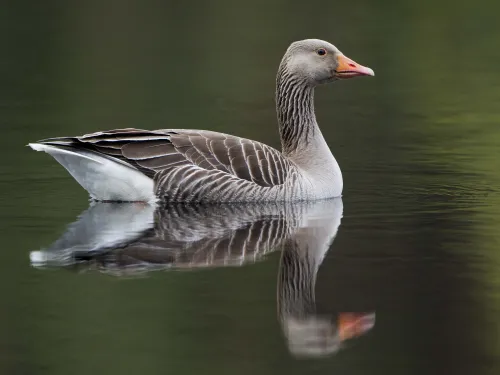
The greylag goose can be easily spotted around parks, gravel pits and river valleys, but these populations tend to be semi-tame, having been reintroduced. Truly wild populations can be found in Scotland.
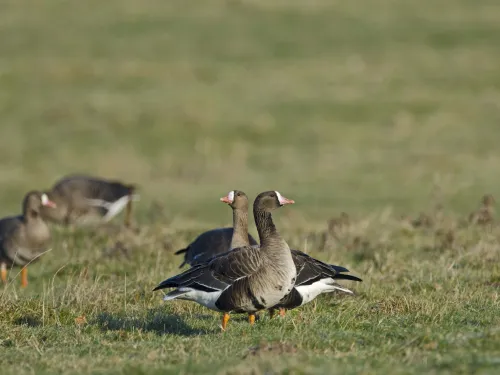
The white-fronted goose lives up to its name - look out for the white patch on its forehead and around its bill. It does not breed in the UK, but flies here from Greenland and Siberia for the 'warmer' winter weather.
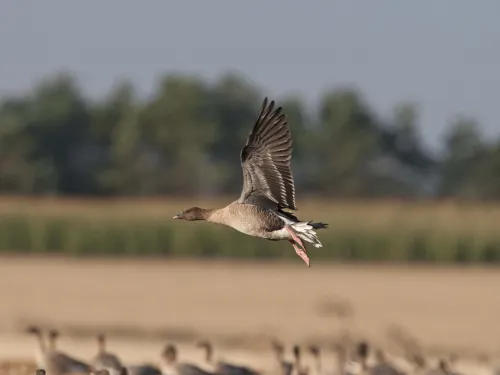
The pink-footed goose is a winter visitor to the UK, feeding on our wetland and farmland habitats. About 360,000 individuals spend the winter here, making it a really important destination for this bird.
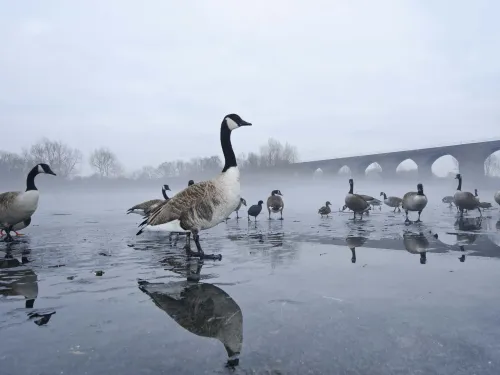
The Canada goose is our most familiar goose, although it is not actually native to the UK. A common and bold bird, it can be found around most parks, lakes, reservoirs and gravel pits.
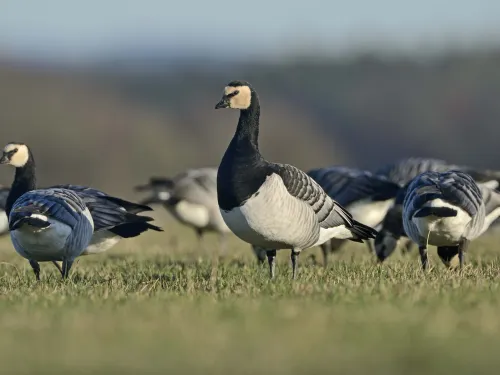
The black-and-white barnacle goose flies here for the 'warmer' winter from Greenland and Svalbard. This epic journey was once a mystery to people, who thought it hatched from the goose barnacle at sea!
The brent goose flies to the UK for the milder winter. Two populations arrive: those with dark bellies can be found around Eastern England
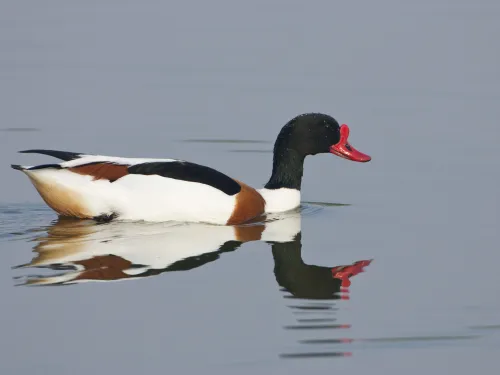
One of our largest ducks, the shelduck is a handsome creature with a dark green head, red bill and chestnut-brown band across its white body. Look out for it around most of our coastline, particularly in winter.
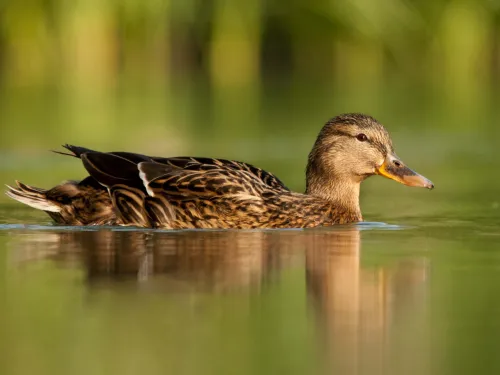
The much-loved mallard is our most familiar duck, found across town and country. If your feeding the ducks please don't feed them bread - it's not good for them! Instead, they love eating sweetcorn, lettuce, oats and seeds.
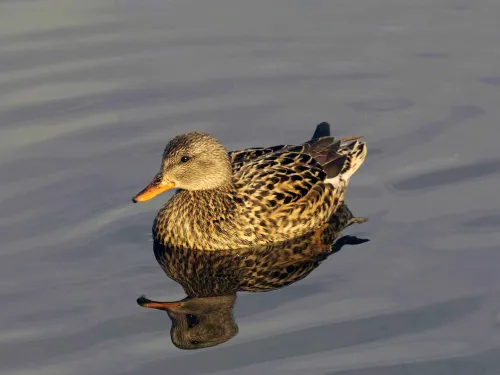
The gadwall is a dabbling duck, feeding at the surface of shallow water by 'upending' - putting its head down and its bottom up! Only a small number of gadwall nest in the UK, but large numbers winter here.
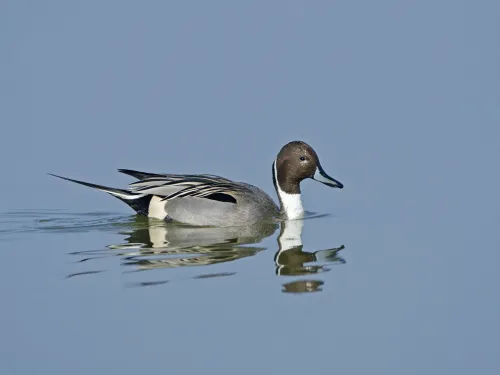
When spotting the pintail in winter, look out for the fabulous, long tail feathers that characterise it. This dabbling duck feeds at the water's surface, rather than diving for food.
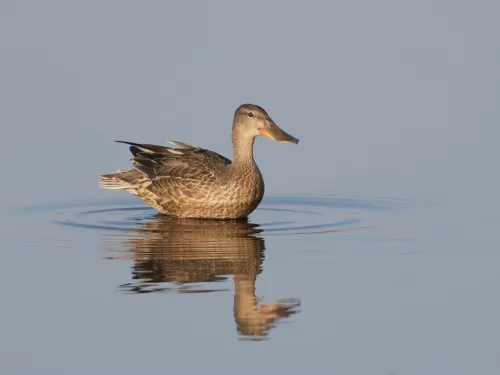
Living up to its name, the shoveler has a large and distinctive shovel-like bill which it uses to feed at the surface of the water. It breeds in small numbers in the UK, but is widespread in winter.
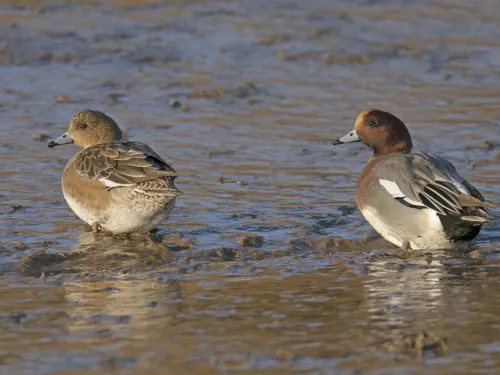
The wigeon is a colourful duck that can often be spotted wheeling round our winter skies in large flocks. A dabbling duck, it surface-feeds on plants and seeds in shallow waters.
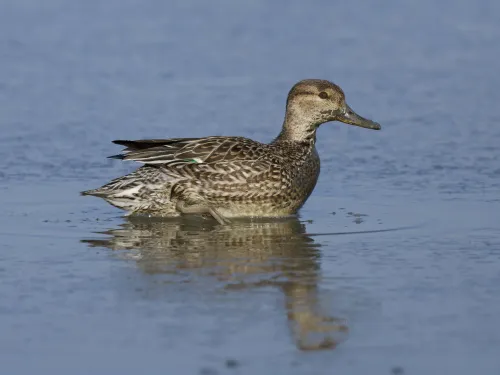
The teal is a pretty, little dabbling duck, which can be easily spotted in winter on reservoirs, gravel pits, and flooded meadows. Watching flocks of this bird wheel through a winter sky is a true delight.
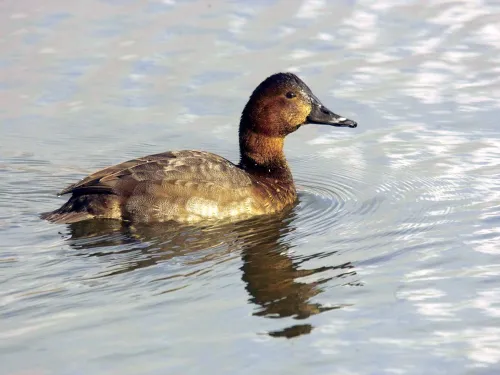
The once-common pochard is now under threat because its populations are declining rapidly. The UK is an important winter destination for the pochard, with 48,000 birds visiting our wetlands and coasts.
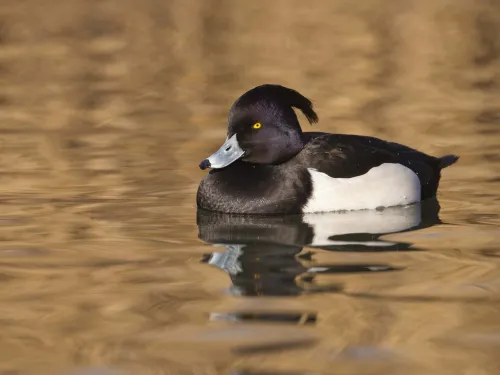
This comical little duck lives up to its name – look out for the black tuft of feathers on its head!
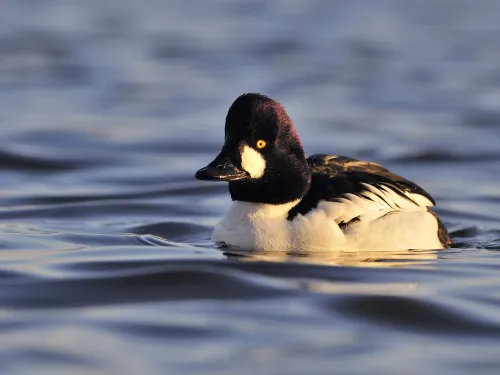
A medium-sized diving duck, the goldeneye can mainly be spotted in winter when birds fly in from Northern Europe. Conservation efforts have helped small numbers of these birds to nest in Scotland.
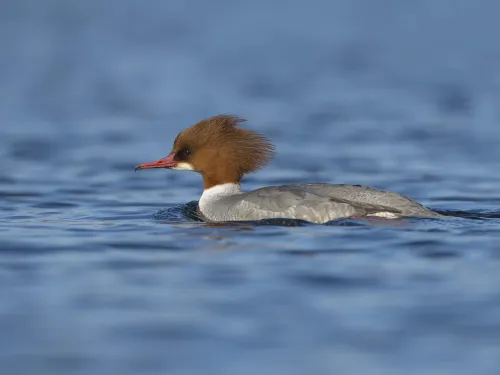
The streamlined goosander is a handsome bird and a great fisher - its long, serrated bill helps it to catch and hold its slippery fish prey. It nests in riverbank trees, but can be seen on lakes and reservoirs in winter.
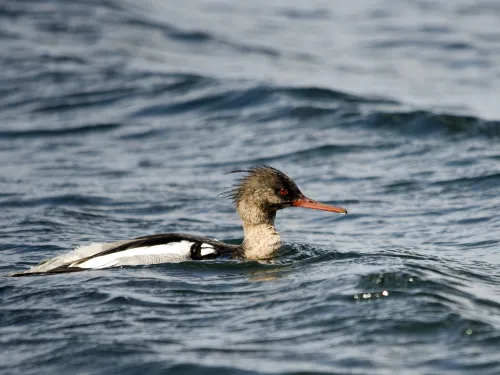
The streamlined red-breasted merganser is a handsome bird and a great fisher - its long, serrated bill helps it to catch and hold its slippery fish prey. It is most commonly spotted around the coast in winter.
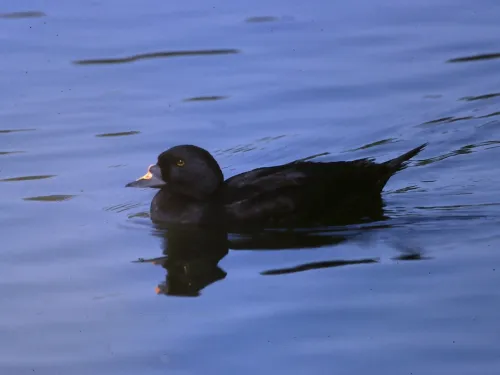
The common scoter has suffered large declines in the UK, threatening its survival here. Look out for this duck feeding at sea in winter when its numbers are bolstered by migrating birds.
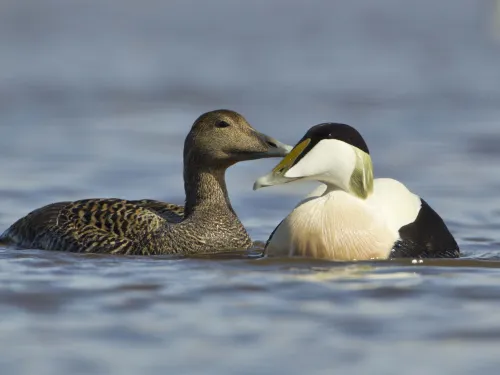
The eider is a large seaduck, famed for its soft, downy feathers that are not only used by the bird to line and insulate its nest, but also by humans to stuff our quilts and pillows. It nests around the northern coastline of the UK.
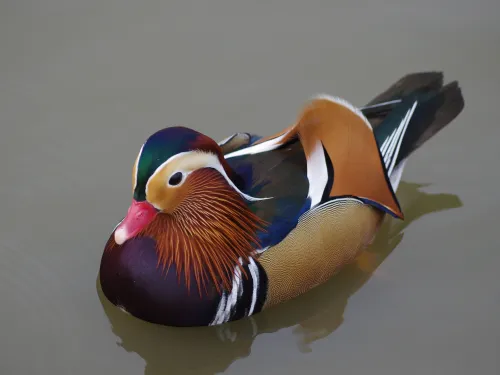
A pretty and distinctive little waterbird, the mandarin duck was introduced from the Far East as its name suggests. Oddly for a duck, it nests in trees, sometimes high above the water.
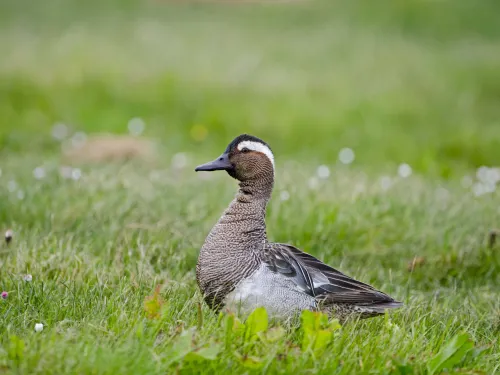
This scarce breeding duck is a summer visitor, spending the winter in Africa. Although large flocks can be found in their wintering grounds, they are usually only seen in pairs or small groups in the UK.
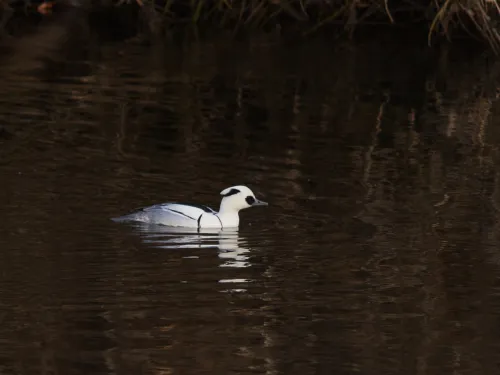
This small duck is an uncommon winter visitor to the UK, where they're usually found on lakes, reservoirs and gravel pits.
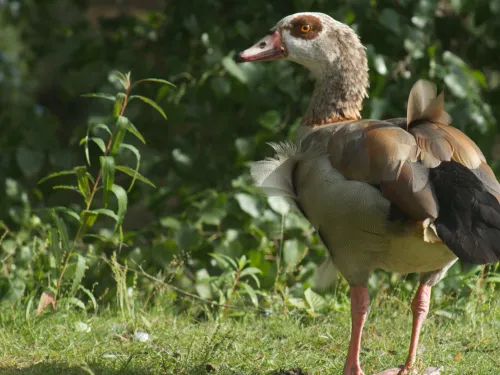
Egyptian geese were introduced to Britain from Africa. They are now widespread in southern England.
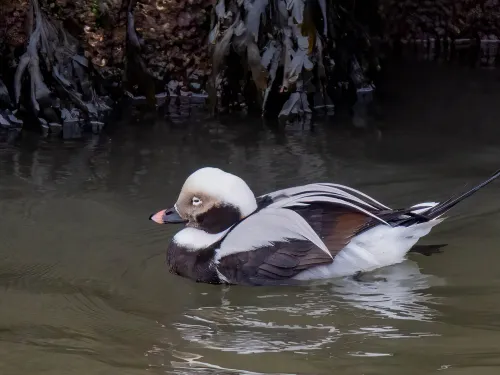
This dainty seaduck is a winter visitor to our coasts, particularly in northern and eastern Scotland.